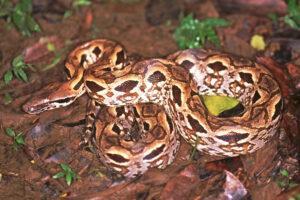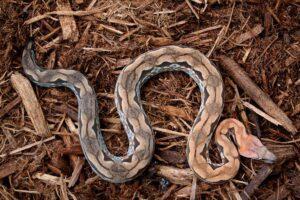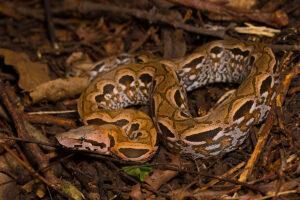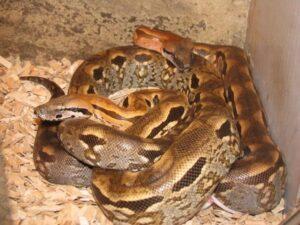Madagascar Ground Boa (Acrantophis madagascariensis)
Updated on
25/04/2024Madagascar ground boa, as the name suggests, is endemic to the island of Madagascar. It is also known by the names Madagascar boa and Malagasy boa. The carnivores hunt at night and spend a major part of their life on the ground. They camouflage themselves in leaf litter and wait for their prey before striking.
Scientific Classifications
- Suborder:Serpentes
- Family:Boidae
- Genus:Acrantophis
- Species:A. madagascariensis
Conservation Status
Description
Size
The constrictor’s average length of 8 ft (2.44 m) makes it the largest snake in its native land. Adult females can reach up to 10 ft (3.05 m) in length, while the males are smaller.
Color and Appearance
The background color is a combination of pale reddish-brown and gray overlaid with a rhomb pattern on the dorsal side outlined with brown or black. It lends a vague zig-zag look to the snake. A series of black ovoid patterns with reddish blotches on the sides often have a white center or border.
Glance
Distribution
The species can be found in Madagascar’s central, western, and northern parts.
Lifespan
It lives for around 19 years.
Predators
Its natural predators are birds of prey, fossa, and other snakes.
Reproduction
Ovoviviparous (gives birth to live young from eggs that hatch inside the body)
Brumation occurs in the cool and dry winter, usually May through July. Mating takes place immediately afterward, with the females courted and copulated by multiple males. The gestation period extends for 4-6 months post which a female gives birth to 4-6 young. The neonates are quite large, 19-24” (48-61 cm) in length, and capable of feeding on small birds and rodents.
Source
static.inaturalist.org, i.pinimg.com, madamagazine.com









